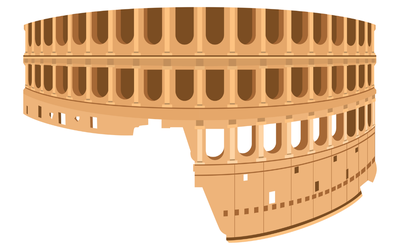
Norwegian Wood
On the Champion's Technique and the Knight's Worst NightmareShe asked me to stay
And she told me to sit anywhere
So I looked around
And I noticed there wasn't a chairThe Beatles, Norwegian Wood
Consider the following scenario: calm opening, nothing special happening in the middlegame, serial exchanges emptying the board, the one seamlessly wins an optically balanced but somewhat uncomfortable for the other side ending.
How often have we seen opponents of Magnus Carlsen miraculously collapsing under the almost invisible pressure of his outstanding technique? Well, his game against Aryan Tari in the 7th round of the Norway Chess 2021 became yet another demonstration of his overwhelming endgame power.
And it is anything but a miracle.
The story
Mostly following the abovementioned scenario, the game proceeded to the materially balanced queen and knight ending:
How to evaluate this position? Let's have a look at the following example first:
In a journey from the center to the periphery, the knight often loses his shining armor and runs away in fear, leaving a poor horse face to face with the enemy. And so the knight is uneasy about the outside passed pawn, the rook pawn being his worst nightmare.
Now, think about the pawn structure in the game. White's passer is isolated, and thus Black can effectively blockade it with the knight. More importantly, though, it is going to be a central blockading square. On the contrary, Black's potential passed pawn will be an outside one, meaning the blockade will be possible only on the edge of the board or nearby.
Is this factor so critical with queens present on the board? True, the queen may be pretty efficient in fighting the enemy passer and creating counter-threats simultaneously. Therefore, it is in White's best interest to keep the queen on the board. And this provides Black with another weapon: they can kick an opponent's queen away not only using the attack but also just offering the exchange - an invaluable help in the fight for space!
All the factors considered Black has some advantage. Their plan is as follows:
- Maneuver the queen and the knight to grab more space;
- Create a passed pawn on the queenside whenever there is a good opportunity;
- Exert pressure in the center and on the kingside to tear the opponent's defense apart.
Black made visible progress within six moves: the knight is in an excellent attacking position, the queenside pawns started moving, and the opponent's pieces became notably passive. It may still feel like White is doing not that bad, but multiple spots, through which Black can invade, make White's defense extremely difficult.
The knight has gone, but his worst nightmare manifests itself nevertheless:
If you want to look at some more examples of the complicated relationships between the knight and the outside passed pawn, I would recommend the following games:
- Lasker - Nimzowitsch, Zurich 1934
- Bonner - Medina, Haifa 1976
Take-aways
- An outside passed pawn, especially a rook one, poses a dangerous threat to the knight, which becomes pretty awkward trying to stop it.
- Many principles of the pawn endings apply to the knight endings. Evaluation of positions with outside passed pawns is a good example.
- Good technique is a mix of firm endgame knowledge, efficient calculation of short variations, and practical experience.
- Practical chess success is not only of the chess nature. There are many factors, psychology being one of the most important.
- Next time you feel like not studying endgames, take a deep breath. Think about Carlsen, listen to The Beatles, and find a chair comfortable enough to make a deep dive into Dvoretsky's Endgame Manual.
PS.
Every chess position tells a story, even though the language it's using may often feel somewhat hard to grasp. Good news: the more stories one explores, the clearer the language of chess sounds. Hopefully, this one slightly improved your chess comprehension.
Thanks for listening ;)
Donations are welcome! If you feel like doing it, do it here.

